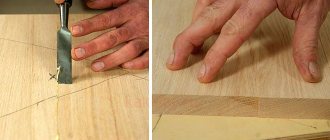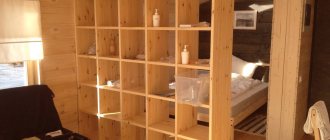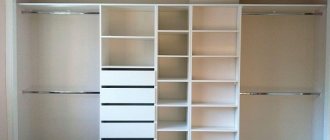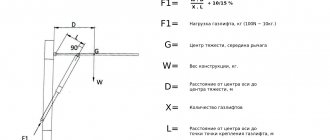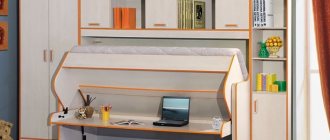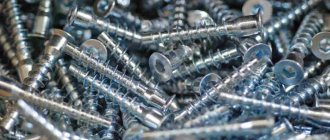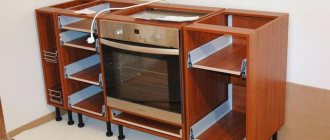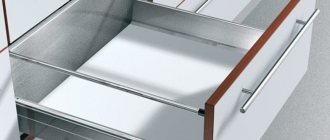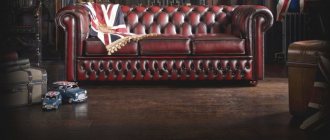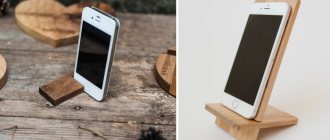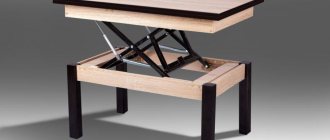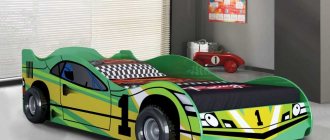The fundamental difference between finished products made from laminated solid wood (countertops, window sills) and furniture panels lies in the cycle of final technological operations for processing furniture panels, where the skill, professionalism and creative potential of the carpenter are fully revealed.
As a result, the customer receives the product he dreamed of:
- The right size, shape, decorative finish you like.
- In exact accordance with the chosen style and color palette.
Moreover, all products are of excellent quality:
- Strong, durable, meets safety standards.
- They maintain impeccable aesthetic appeal for a long time.
What is a furniture panel?
Furniture board is a wood board. It is made by gluing together wooden blocks. To assemble sheet natural material, lamellas with a width of 10-70 mm are used. This technology has great advantages. It is possible to solve one of the difficult problems of natural wood - curvature. By gluing the lamellas, the internal stress is reduced and the material is not deformable. The result is large-format solid-lamella wooden products.
Different types of wood are used as material for furniture panels: spruce, birch, pine, alder, ash, beech. In some cases, fruit tree species are used.
Material advantages
Furniture panels are very popular today. The high demand can easily be explained by a large number of advantages, including:
Health safety
The main advantage of furniture board is the eco-friendly materials from which it is made. Only natural wood species are used for its production. The gluing technology does not require aggressive chemical ingredients. Thanks to this, the material does not emit toxic substances during operation. It can even be used to decorate a children's room.
Practicality and durability
When the canvas is created, the lamellas are laid so that the wood fibers are located in different directions. This increases strength indicators by 50-70%.
Beautiful appearance
During production, the natural grain of the wood is completely preserved. The texture and shade of each type of wood is beautiful in its own way. A wide selection of patterns and colors allows you to create interiors in different styles.
Moisture resistance
Solid wood is much more difficult to dry than small lamellas individually. Therefore, the percentage of moisture in furniture panels is low. Some types of slabs can be used to furnish the bathroom and kitchen. The main condition is that the lamellas must be connected with a special glue, treated with special wax or glue.
Resistance to mold and mildew
The outer surface of the wood slab is treated with an antiseptic. Mold and fungi do not grow on it. The result is a long service life of the material.
No cracks
Due to the multi-directional nature of the fibers, furniture panels are resistant to cracking. Solid wood often suffers from this problem because the grain of the wood is oriented in one direction.
Easy processing
The slabs are easy to sand and cut. Working with them is not difficult. In addition, the surface can be easily restored after damage.
Options and advantages of using furniture panels in various fields
The advantages of using furniture panels in the modern world extend to both furniture production and the field of house construction. Due to their high strength with low thermal conductivity, resistance to deformation, moisture and various aggressors, furniture boards have gained advantages in the following areas:
- interior decoration of bathrooms, kitchens and other premises; in the serious furniture industry: production of both luxury and economical public furniture;
- doors (due to soundproofing properties); window sills made of natural material have a very high value;
- panels and ceilings - the advantage is convenience and practicality, as well as high cost savings;
- solid or glued board, due to its low humidity and high moisture resistance, is successfully used on floors;
- production of oak or ash staircases with excellent strength and durability;
- good heat retention and allows installation under parquet.
Among the obvious physical and technical advantages of furniture panels we can also name:
- excellent combination with various materials;
- thanks to the polished surfaces, they are easy to cover with transparent/opaque coatings;
- environmental cleanliness and harmlessness to humans;
Furniture panels are convenient for making very interesting and complex designs, which is why they are popular in choice by well-known furniture manufacturers. Where threaded connections or complex fitting structures are required, which is inconvenient when using chipboard, as well as when making specially shaped cuts, these panels cannot be used.
Shield technical characteristics
Further application, as well as calculation of consumption, depend on the characteristics. For example, with the choice of lamellas, you can get products with the following characteristics:
- performed by gluing lamellas in width or length;
- when designing for laying in width, the lamellas can have sizes of 40-45, 70-80 mm and 100-110;
- the length of the sheets reaches 2 meters when making a solid panel or up to 5 meters using lamellas;
- sheet thickness is 18-40 mm, but if necessary, manufacturers produce other options;
- the humidity level reaches, depending on the batches and type of wood, from 6 to 12%, but 8% is considered the most optimal;
- in terms of grinding quality, the grain size can be 80-120 units.
Production technology
Let's try to figure out composite furniture board - what it is and how it is made. The production process consists of several stages:
- Raw wood is cut into boards.
- The resulting boards are dried until the moisture content drops to 6-8%.
- The boards are “cut” - cut into lamellas.
- Then the lamellas are assembled into a sheet and glued together.
- The layer obtained from the bars is pressed.
- After pressing, the material is processed by planing on all sides.
- The layer is cut to the required size and trimmed to length.
- The resulting shields are polished on a machine. Packed in film.
Scope of application
It’s hard to even imagine how widely furniture panels are now used! Cabinet furniture - from sofa frames to cabinets, furniture upholstery and decorative figurines, stair steps, windows, doors, countertops, baseboards and even verandas - the material is best suited for the manufacture of all this. Due to its high performance qualities, furniture panels can be used both indoors and outdoors.
When purchasing furniture panels, you should pay attention to the packaging. Heat-shrink film is an ideal option in which the wood is protected from dust and moisture, and its surface is protected from mechanical damage. Furniture panels can be sold either individually or by square or cubic meters. The optimal fastener for this material is self-tapping screws.
To extend the service life of furniture panel products, a number of measures must be observed:
- Keep material away from areas with sudden temperature changes.
- Furniture intended for outdoor use should be stored indoors during the cold season (we are talking about garden tables, benches and sun loungers).
- Shelves, cabinets, tables and chests of drawers should not be overloaded with heavy things.
- Try to choose only high quality material.
If treated with care, furniture and interior items made from furniture panels can last a very long time.
Unlike chipboard or MDF, furniture from which is difficult to disassemble and assemble without damage, a wooden panel is ready to withstand many tests. In addition, at any time you can restore the surface of the furniture without damaging the product itself. To the listNext articlePrevious article
Types of furniture panels
Which furniture panel is better? How to choose a furniture panel from a wide variety of options? To answer these questions, you must first understand what types of furniture panels there are.
The first sign by which the material is divided into types is the assembly technology. According to this parameter, there are 2 types of shields:
- Solid lamella.
- Spliced.
Solid lamella
Such slabs are made from long bars. They are glued together into a single web with only the sides. The pattern of the lamellas is selected so as to visually give the impression of a single array. The price of all-lamella material depends on its length. The longer the shield, the higher the price per 1m3. This can be explained simply: to produce long slabs you will need expensive material - tall tree trunks without defects. A furniture board of this size will be expensive. The all-lamella type of material can be used anywhere: for the manufacture of window sills, countertops, and decor.
Spliced
These shields do not connect solid beams, but several short ones. They are glued together not only on the sides, but also on the ends. To make the fastening as strong as possible, not only glue is used, but also open and closed tenons. The seams where the bars were connected often remain visible. When gluing, the uniformity of the pattern is not maintained. Externally, this assembly resembles parquet. The price of jointed slabs is less than that of solid slabs.
Which furniture panel is better: solid-lamella or spliced?
This question immediately arises when choosing a suitable material. The answer depends on the purpose of the purchase. For example, if you plan to manufacture steps and staircase landings, then it is better to buy spliced furniture panels, the dimensions of which allow this type of work to be carried out. They are stronger in bending and evenly distribute the load across individual sectors. After all, there is such a rule: the more glues, the more reliable the product.
In addition, they can be used where appearance is not so important - internal shelves, side and back walls of furniture. If external presentability is important, then the answer to the question of which furniture panel is better: spliced or solid-lamella is obvious. Solid lamella has the best external characteristics.
Kinds
Depending on the technology used when assembling lumber blanks, the following types of furniture panels are distinguished:
- with a one-piece fabric design;
- with a spliced web structure, which, in turn, is divided into products:
- with an open spike,
- with closed tenon;
- with single-layer fabric;
- with multi-layer fabric.
According to the method of further use, the produced natural wood canvas is usually further divided into:
- furniture board, which is glued together from lamellas along the entire length of the canvas and has a high-quality surface;
- joiner board with lower quality surfaces that will require finishing.
Types by type of wood
The description of furniture panels begins with the type of wood. They are made from almost any type of wood. Much will depend on what type of wood is chosen:
- shade;
- drawing;
- physical properties;
- strength.
Let's consider the most commonly used types of wood from which furniture panels are produced in accordance with GOST.
Pine
. Durable, inexpensive material, density 500 kg/m3. It withstands moisture well and is durable.
E l
. Less hardy material and not so dense - 445 kg/m3. Its advantage is low thermal conductivity. It holds heat well. It is used for finishing interior space and making inexpensive furniture.
Birch.
It is distinguished by the lightest shade of wood and high decorative properties. The main disadvantage is susceptibility to moisture. Density – about 650 kg/m3.
Larch
. The advantage of this type of wood is its low price and good resistance to moisture. The disadvantages are that the design is not the most beautiful and the hardness indicators are not the best. Material density – 660 kg/m3.
Oak
. Belongs to the luxury category of wood. Oak is characterized by an exquisite appearance and the highest strength. Density is 750 kg/m3. Furniture made from such wood can last for decades. If the question arises: “which furniture panel is better?”, then we predict the answer: of course, oak. The disadvantages include the high cost and weight of the furniture board.
Use in furniture production
In carpentry, panels can be used to make structures out of wood. They are also widely used in the production of interior items. From furniture board you can make:
- tables and chairs;
- chests of drawers;
- shoe racks in the hallway;
- stools;
- children's and adult beds.
What are furniture confirmations, advantages and disadvantages
Sometimes wooden panels are used to replace plasterboard when finishing walls and ceilings. Door panels and various types of stairs made from this material are very popular. Furniture boards laid as parquet boards look beautiful.
Most often, cabinet furniture in living rooms and hallways is made from maple panels; alder and linden are less popular. The uniqueness of the first material is that it can be used to decorate any type of premises. Due to their increased resistance to moisture and mechanical external influences, products made from sheets of different sizes are well suited for children's rooms, bathrooms and toilets. A variety of colors and shades, as well as patterns on the surface, makes it easy to choose the wood that is most suitable for a specific interior. The products go well with Provence and classic styles, but poorly with hi-tech.
Tables, chairs, stools
Dressers
Shoe racks in the hallway
Beds
Wall decoration
As parquet
Types of furniture panels
When talking about what types of shields there are, it is necessary to mention their grade. Wood products are classified according to the presence of various defects: knots, cracks, deformations, biocontamination. The condition of the core and its shade are also taken into account. According to this classification, products are divided into varieties:
- Extra
. Furniture board of the “Extra” grade is the most expensive. There are practically no defects on it. There is no sapwood, knots, resin pockets, cracks or other imperfections. The panel pattern is carefully assembled from different lamellas so that it resembles solid wood. - Grade A.
Furniture panels of category A are also distinguished by a high level of quality. Several knots are allowed: per 1 m2 – 2 dark or 4 light. Their diameter can vary from 0 to 3 mm. Also, per 1 m2 there may be 1 small non-through crack and 1 curl. - Grade B.
2-3 knots are allowed per 1 m2. Possible sapwood - up to 10%, minor dents, small blind cracks. - Variety
C. This category includes wood products with a large number of flaws: cracks, captive knots, blind cracks, dents, curls, sapwood - up to 75%.
The markings are quite clear. But it happens that there are designations like: AB furniture board. What does this mean? It's simple: the grade is determined by two sides: A/A, A/B, A/C, B/B, B/C, C/C.
Classification
Pine panels vary greatly in quality. The classification includes three main groups: A, B, C and Extra. They differ in texture and the presence of knots. Features of different types:
- C is the simplest option. It may contain a large number of rather large knots, even the presence of cracks and minor damage is acceptable. This also has a positive side - the appearance here will be the most natural due to the absence of work to remove flaws. Usually only frames are made from such shields, which are not visible to guests and owners of the house.
- B – middle class. There are much fewer knots here, but they are still there. The same situation with cracks. The reliability and strength of such a solution will be at a higher level than in the case of the previous type. It is also used for frames, but in more expensive furniture. This product will last much longer.
- A – cracks are not allowed here at all, knots can only be very small, in small quantities. Used for the production of external parts. They have the perfect balance between natural appearance and reliability.
- Extra-class - made from selected raw materials. The presence of knots or the slightest defects is unacceptable. It is also worth noting that the texture and color here are very different from all other varieties due to long processing. This doesn't mean the material looks worse, it's just a little different. This type is the most expensive; its cost can be compared with more valuable types of wood.
Review of basic types of furniture fittings, selection criteria
Shields are almost always double marked. For example, A/B would mean that the outside of the sheet is made from a higher grade of raw material than the inside. This allows you to get a high-quality appearance, but save a little money. This approach makes it possible for more people to afford similar material. You can also find markings with two identical letters. This means that the shield is made from sheets of the same type.
Size is a completely individual parameter, but there are some recommendations regarding the thickness of the panels for different types of furniture. When making tables, stairs, window sills, you should choose sheets with a parameter of at least 40 mm. Such elements can be subjected to heavy loads, which requires high strength from them. Partitions or stairs can be made of material 25–30 mm thick. Simple furniture in which light items will be stored requires 15–20 mm.
A class
To class
C class
Extra class
What sizes are there?
Furniture panels can be made to order. But there are standard sizes of furniture boards. Widths vary from 200, 300, 400 mm and up to 1200 mm. The length of the slabs can be from 1000 to 3000 mm. The thickness of the material starts from 14 mm and ends at 50 mm. Permissible deviations in size: thickness +0.2 mm, width +1 mm, length +1 mm.
Which material is better?
When choosing between wood products, you may be faced with a difficult question: “what is better – furniture board or chipboard?”, “what is stronger: furniture board or plywood?” The choice depends on the purpose of the purchase and financial capabilities:
Plywood.
Veneer sheets glued together in several layers. The strength of the material is comparable to natural solid wood. Plywood holds fasteners well and is highly wear-resistant. The scope of application is limitless. But due to its high strength and environmental friendliness, it is most often used for the production of children's furniture: high chairs, tables, cribs, chairs, cabinets, chests of drawers.
Chipboard.
The material is produced by pressing shavings and sawdust. Bulk elements are combined into a slab with formaldehyde resins. Stability is the main quality of chipboard. Thanks to him, wood panels are used in the manufacture of kitchen furniture. The main disadvantage is the short service life, no more than 10 years.
MDF.
Wood shavings and sawdust are pressed under high pressure. The boards are more environmentally friendly than chipboard. Adhesives of natural origin are used to glue the board components together. The products withstand high temperatures, humidity, and steam. For this reason, the material is often used for the production of kitchen furniture, bathroom and bedroom sets. The durability is low, like chipboard - about 10 years. Another disadvantage is that it does not hold fasteners and screws well.
As you can see, furniture panels are superior in many respects compared to other wood-based panels. Possessing all the advantages of natural solid wood, they have a long service life, are not too expensive in price, and are distinguished by high aesthetic properties.
Main advantages
Furniture board is one of the most affordable materials for craftsmen and amateur carpenters. You can purchase sheets of different sizes at any construction department. The product has many advantages compared to MDF, chipboard, fiberboard:
- durability;
- sustainability;
- possibility of repair;
- practicality.
The variety of shapes and colors of sheets makes it easy to decorate any interior, spending a minimum of money, time, and effort. It is not necessary to putty the surface of furniture made from this material; you can only treat it with colorless wood varnish. Due to the absence of internal stress, the wooden panel does not warp or crack over time. The panels are also highly resistant to moisture and do not suffer from fungus and mold; Veneered sheets last especially long. Production technology allows you to include additional materials in the composition. Most often these are inclusions of marble, granite or plastic of various colors and shades.
This material is considered natural. Unlike chipboard, it does not emit harmful substances, so we can safely recommend wooden panels for the manufacture of children's furniture - tables, chairs, cribs for newborns. Prolonged contact with the sheets does not cause allergic reactions, and there is no unpleasant odor from them. During production, aggressive chemicals are not used to process raw materials.
Reasons for the popularity of roller shutters for wardrobes, their types
The main aesthetic advantage of the product is the interesting pattern on the surface of each sheet. Its specificity depends on what kind of wood was used as raw material. The most beautiful are products made from alder, birch and oak. They are often used to make designer luxury furniture. The needles also look impressive.
Professional designers claim that furniture made from panels has the unique ability to fit into the interior of any style. Wenge-colored material looks most impressive in modern city apartments and private houses.
Durability
Sustainability
Possibility of repair
Practicality
